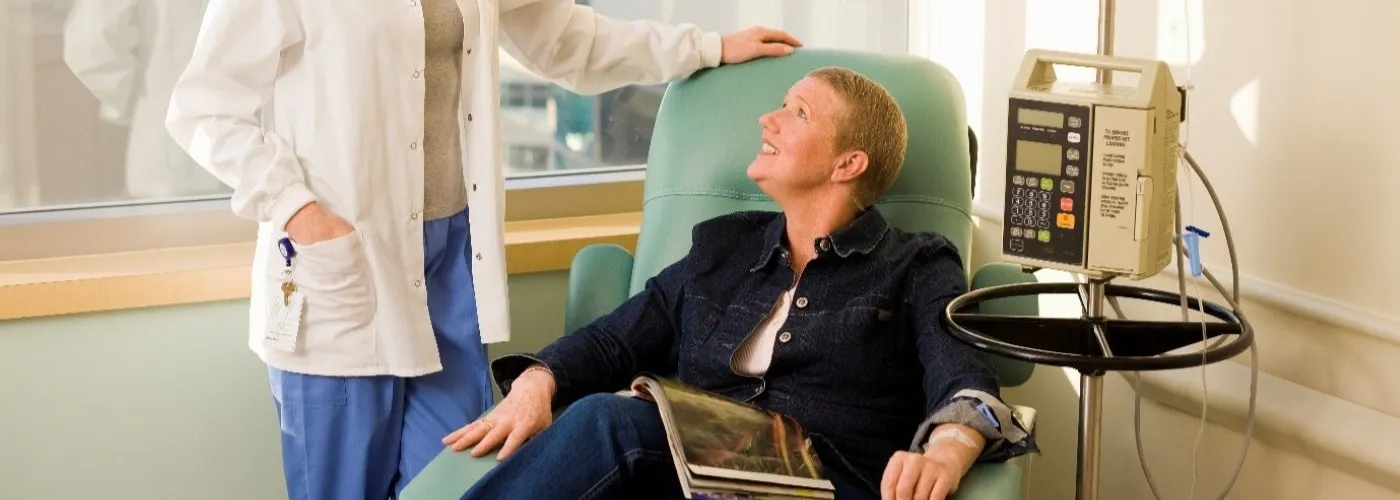Topics
Understanding Chemotherapy Costs: Key Factors and Financial Considerations Primary Factors Affecting Chemotherapy Costs Strategies to Manage Chemotherapy Costs Conclusion References:Understanding Chemotherapy Costs: Key Factors and Financial Considerations
Chemotherapy is a widely recognized and commonly used treatment for cancer. As an effective method to eliminate cancer cells and control tumor growth, chemotherapy may be used independently or in conjunction with other therapies, such as radiation or targeted treatment. According to The University of Texas MD Anderson Cancer Center, chemotherapy can be tailored based on the type and stage of cancer, making it a flexible treatment approach.
While its therapeutic benefits are significant, chemotherapy can also pose a substantial financial burden on patients and their families. This is due to the wide range of variables that influence overall treatment costs. Understanding these factors can help patients better navigate their treatment options and plan for the financial aspects of care.
Primary Factors Affecting Chemotherapy Costs
1. Type and Stage of Cancer
The specific type of cancer and its stage at diagnosis are among the most significant determinants of chemotherapy costs. Certain cancers—such as leukemia, pancreatic, or metastatic lung cancer—often require more aggressive and prolonged treatment regimens.
Early-stage cancers typically involve fewer treatment cycles and lower medication doses, leading to lower costs.
Advanced-stage cancers, especially those that have metastasized, require more frequent and intensive treatments, including possible use of targeted therapy or immunotherapy, which significantly increases costs.
2. Type and Frequency of Chemotherapy
Chemotherapy may be administered in various forms:
- Intravenous (IV) infusion – usually administered in hospital settings under close medical supervision; this method is generally more expensive due to associated facility and staff costs.
- Injections – less time-consuming but still require professional administration.
- Oral medications – offer convenience and flexibility but may involve higher medication costs, especially if branded drugs are prescribed.
- The frequency of treatment—whether weekly, biweekly, or monthly—also affects total cost. Patients requiring more frequent sessions or combination therapies will typically incur higher expenses.
3. Healthcare Facility and Location
The choice of treatment facility plays a major role in determining overall costs. Private hospitals often charge more due to advanced infrastructure, shorter wait times, and enhanced patient comfort.
Government or public hospitals may offer more affordable treatment options but with limited availability or longer waiting periods.
Additionally, hospitals located in metropolitan areas generally have higher treatment costs compared to those in smaller towns, due to higher operational expenses and access to advanced technologies.
4. Medications and Drug Regimens
The cost of chemotherapy drugs varies significantly:
- Generic medications are more affordable and widely available, offering a cost-effective option for many patients.
- Patented or branded drugs, often derived from the latest research, are more expensive and may be necessary for specific cancer types or treatment-resistant cases.
- Targeted therapies and immunotherapies, designed to attack specific cancer cells, are particularly costly and are often used in advanced-stage or aggressive cancers.
- Combination drug regimens, dosage changes, or adjustments due to side effects can also escalate total treatment costs.
5. Diagnostic Tests and Support Services
Chemotherapy treatment often involves additional medical services, including:
- Laboratory tests (e.g., blood counts, liver/kidney function)
- Imaging procedures (e.g., CT scan, MRI, PET scan) to monitor treatment progress.
- Specialist consultations, including oncologists, radiologists, and nutritionists.
These services are critical to ensuring safe and effective treatment but contribute significantly to overall expenses.
6. Management of Side Effects and Additional Care
Chemotherapy is associated with side effects such as fatigue, nausea, immune suppression, and hair loss. Managing these side effects often necessitates: Supportive medications, Inpatient care for complications, Rehabilitation therapies (e.g., physiotherapy, nutrition support, psychological counselling)
These services, while essential, add to the cumulative cost of cancer treatment.
Strategies to Manage Chemotherapy Costs
While the financial impact of chemotherapy can be daunting, several strategies can help patients and families manage the burden more effectively:
- Utilize Health Insurance
Ensure that your health insurance policy provides comprehensive cancer coverage, including medications, hospitalization, diagnostic tests, and follow-up consultations. Understanding policy limits, co-payments, and exclusions is critical.
- Seek Support from Charitable Organizations
Many non-profit foundations and cancer support groups offer financial aid or subsidized treatment programs. Hospitals often partner with such organizations, and patients can access information through social workers or hospital administrators.
- Choose Cost-Effective Treatment Facilities
Consider receiving treatment at hospitals that offer quality care at a more affordable cost, especially government-affiliated or nonprofit institutions. Facilities associated with regional healthcare networks, such as IHH Healthcare Malaysia, may provide financial assistance programs or social support services.
- Discuss Options with Your Oncologist
Engage in open discussions with your healthcare provider about cost-effective treatment alternatives. These may include:
- Opting for generic drugs
- Reducing non-essential diagnostics
- Modifying treatment frequency based on patient response
- Maintain a Healthy Lifestyle
Adopting a healthy lifestyle—including proper nutrition, regular physical activity, and stress management—can enhance treatment response and reduce the risk of complications, thereby minimizing additional treatment costs.
Conclusion
Chemotherapy remains a cornerstone of cancer treatment, but it comes with significant financial implications. Costs vary depending on cancer type, treatment protocol, facility choice, and supportive care requirements. While expenses can be high, understanding the key cost factors and exploring available financial assistance programs can help patients make informed, cost-conscious decisions.
Selecting the right treatment centre, leveraging insurance benefits, and seeking external support are vital steps in managing both the medical and financial aspects of cancer care. Always consult with your medical team to find a treatment plan that balances efficacy with affordability.
References:
- https://www.mdanderson.org/treatment-options/chemotherapy.html
- https://my.clevelandclinic.org/health/treatments/cancer-treatment
- https://www.mskcc.org/cancer-care/diagnosis-treatment/cancer-treatments/targeted-therapy
- https://treatcancer.com/blog/cost-of-cancer/#:~:text=Factors%20Affecting%20the%20Cost%20of%20Cancer,-No%20two%20cancers&text=The%20financial%20impact%20of%20your,its%20proximity%20to%20your%20home
- https://www.cancer.gov/about-cancer/managing-care/track-care-costs/financial-toxicity-pdq
